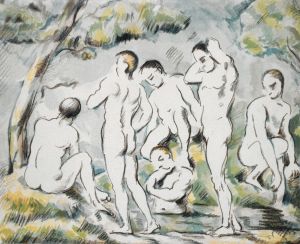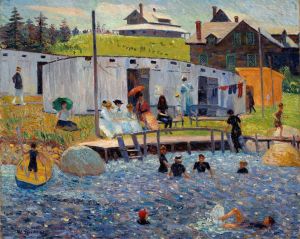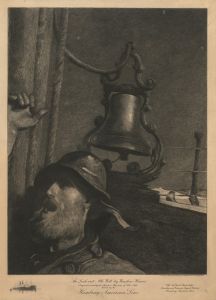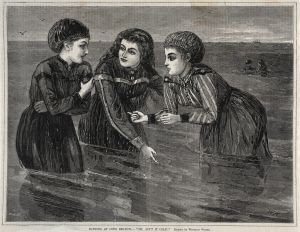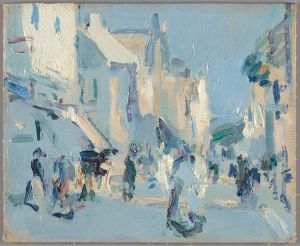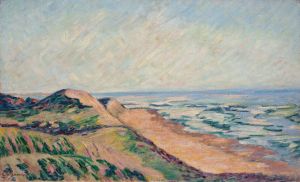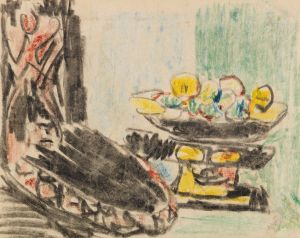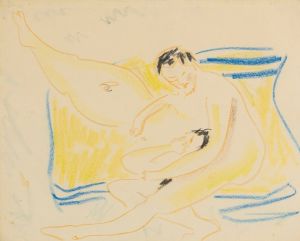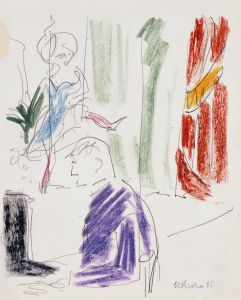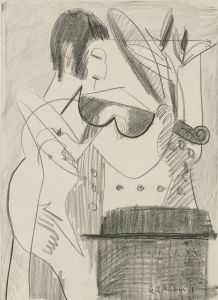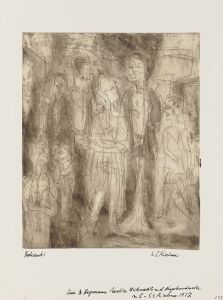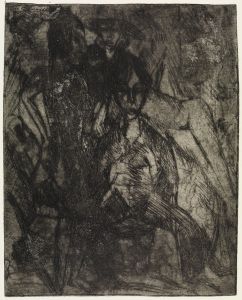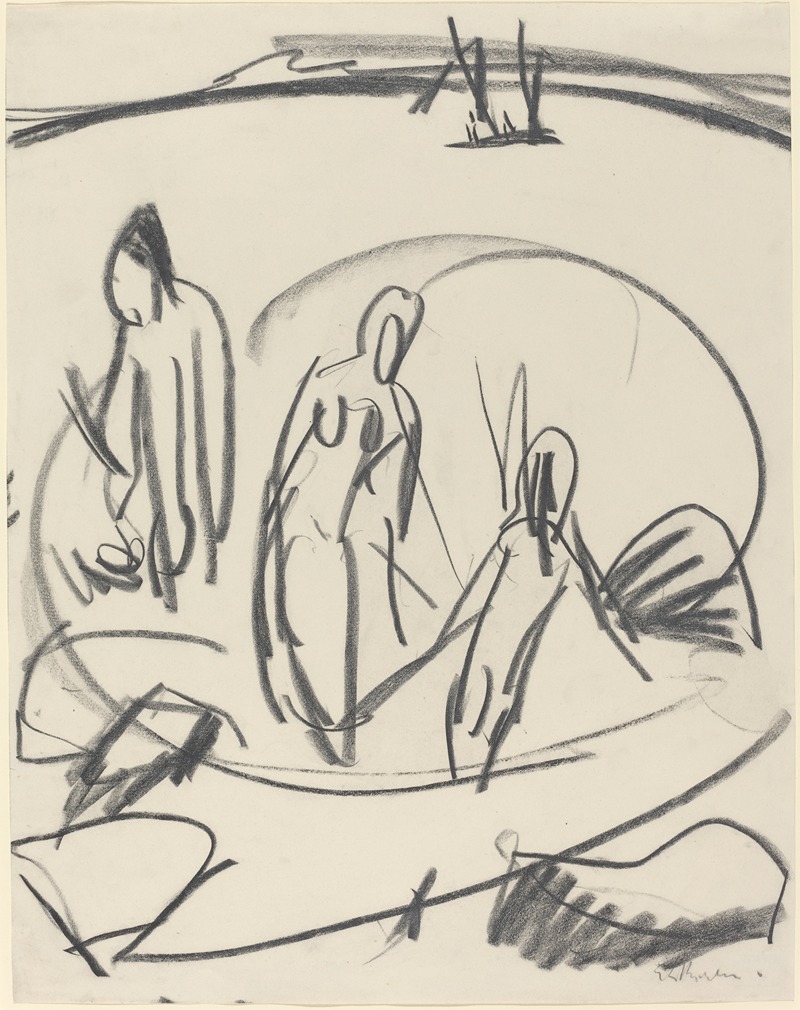
Three Bathers in the Sea
A hand-painted replica of Ernst Ludwig Kirchner’s masterpiece Three Bathers in the Sea, meticulously crafted by professional artists to capture the true essence of the original. Each piece is created with museum-quality canvas and rare mineral pigments, carefully painted by experienced artists with delicate brushstrokes and rich, layered colors to perfectly recreate the texture of the original artwork. Unlike machine-printed reproductions, this hand-painted version brings the painting to life, infused with the artist’s emotions and skill in every stroke. Whether for personal collection or home decoration, it instantly elevates the artistic atmosphere of any space.
"Three Bathers in the Sea" is a painting by the German expressionist artist Ernst Ludwig Kirchner. Created in 1913, this work is a notable example of Kirchner's exploration of the human form and his fascination with the natural world. Kirchner was a founding member of the Die Brücke (The Bridge) group, which played a crucial role in the development of Expressionism in early 20th-century Germany.
The painting depicts three nude figures, presumably women, bathing in the sea. The composition is characterized by its bold use of color, dynamic brushstrokes, and a sense of movement that captures the vitality and freedom of the scene. The figures are rendered in a somewhat abstract manner, with exaggerated forms and vibrant hues that convey a sense of emotional intensity and spontaneity.
Kirchner's work often reflected his interest in the primal and the unrefined, seeking to break away from the constraints of traditional academic art. "Three Bathers in the Sea" exemplifies this approach, as the artist employs a raw and expressive style to depict the human body in a natural setting. The painting's vivid palette and energetic lines are typical of Kirchner's technique, which aimed to evoke a visceral response from the viewer.
The setting of the painting, with its emphasis on water and the outdoors, is also significant. Kirchner and other members of Die Brücke were known for their affinity for nature and often depicted scenes of leisure and recreation in their work. This connection to the natural world was part of a broader movement within Expressionism that sought to reconnect with more elemental and instinctual aspects of human experience.
"Three Bathers in the Sea" is housed in the collection of the Brücke Museum in Berlin, which is dedicated to the works of the Die Brücke artists. The museum holds an extensive collection of Kirchner's works, providing insight into his development as an artist and his contributions to the Expressionist movement.
Kirchner's life and career were marked by both success and struggle. He was deeply affected by his experiences during World War I, which led to a period of personal and professional turmoil. Despite these challenges, Kirchner continued to produce significant works that have left a lasting impact on the history of modern art.
In summary, "Three Bathers in the Sea" is a quintessential example of Ernst Ludwig Kirchner's Expressionist style, showcasing his innovative use of color, form, and composition. The painting reflects the artist's engagement with themes of nature, freedom, and the human condition, making it a significant piece within his oeuvre and the broader context of early 20th-century art.





